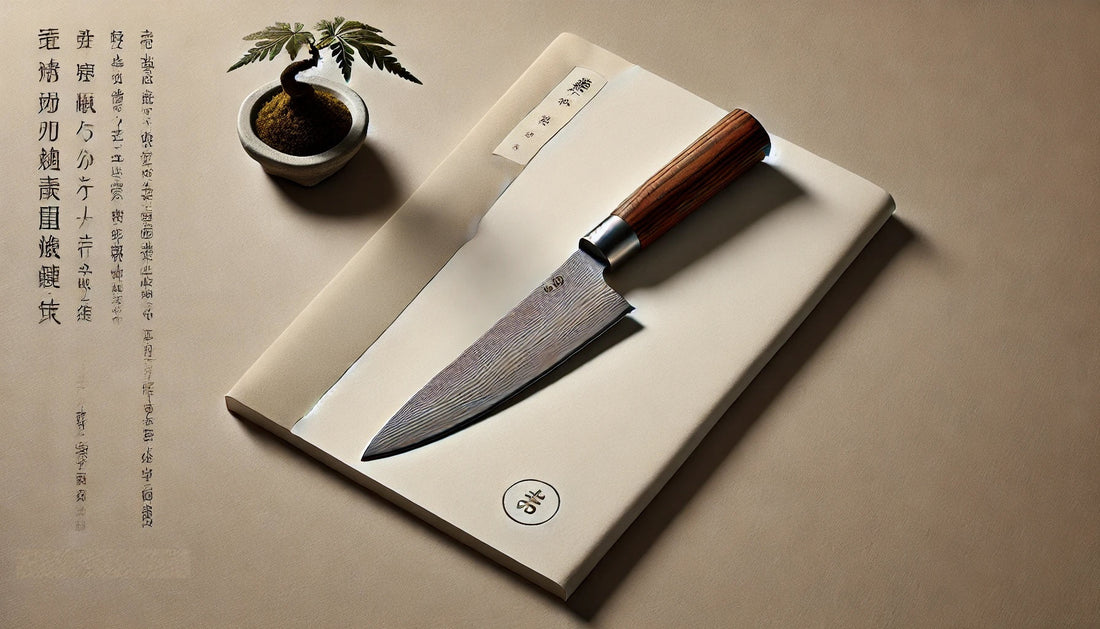
The Rise of Japanese-Style Knives in Western Kitchens: Why They're Taking Over
Share
In recent years, Japanese knives have made their mark in Western kitchens, becoming a staple for chefs and home cooks alike. The allure of these knives goes beyond their sharpness and precision—there’s a rich heritage and exceptional craftsmanship that makes them truly stand out.
So, what’s behind the surge in popularity of Japanese knives in the West? Let’s dive into six compelling reasons why these knives are becoming essentials in kitchens around the globe.
Unmatched Sharpness and Precision
One of the most celebrated qualities of Japanese knives is their incredible sharpness. Crafted with high-carbon stainless steel or Japanese Damascus steel, these knives maintain a razor-sharp edge that allows for incredibly precise cuts. Whether you’re slicing through delicate fish or finely chopping vegetables, a Japanese knife makes the task smoother and more enjoyable.
A Blend of Tradition and Innovation
Japanese knives are steeped in tradition, with crafting techniques that date back to ancient sword-making practices. This blend of historical methods and modern innovation creates knives that are not only functional but also artistic. Every detail, from the hand-forged blades to the ergonomic handles, reflects a deep respect for the craft—a trait that resonates with chefs who value both authenticity and heritage.
The Versatility Factor
Japanese knives like the Santoku and Gyuto are known for their versatility. Unlike many Western knives, which are designed for specific tasks, Japanese knives can tackle a wide range of kitchen duties—from slicing and dicing to mincing and chopping. This versatility makes them a go-to for both professional chefs and home cooks who need a reliable tool that can handle almost anything.
Ergonomic and Aesthetic Appeal
Beyond functionality, Japanese knives are also loved for their ergonomic and aesthetic design. The handles, often crafted from materials like Pakkawood or water buffalo horn, are designed to fit comfortably in your hand, reducing fatigue during long cooking sessions. Plus, the sleek, minimalist design of Japanese knives adds a touch of elegance to any kitchen, making them favorites for both utility and style.
A Growing Trend Among Culinary Professionals
The influence of top chefs has played a significant role in the rise of Japanese knives. Many culinary professionals have embraced these knives, not only for their functionality but also for their artistry. Their endorsements have inspired a new generation of cooks to invest in Japanese knives, further fueling their popularity in Western kitchens.
Investing in Quality
In a world where convenience often overshadows quality, Japanese knives stand out as a testament to the value of well-crafted tools. While they might come with a higher price tag compared to mass-produced alternatives, the longevity, performance, and satisfaction they offer make them a worthy investment for anyone serious about their culinary pursuits.
Conclusion
The rise of Japanese knives in Western kitchens isn’t just a fleeting trend—it’s a reflection of a growing appreciation for quality, craftsmanship, and the art of cooking. As more people discover the joys of using these exceptional tools, it’s clear that Japanese knives are here to stay, continuing to shape the culinary landscape with their precision, beauty, and enduring legacy.
If you’ve been thinking about adding a Japanese knife to your collection, now is the perfect time to see how they can transform your cooking experience. Be sure to check out the SEKKIN Chef’s Knife—crafted with the same dedication to quality and design that has made Japanese knives a must-have in kitchens worldwide.
